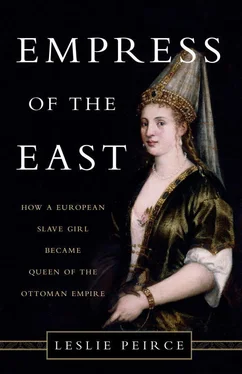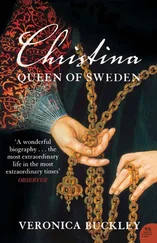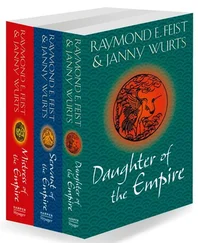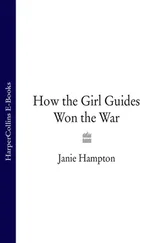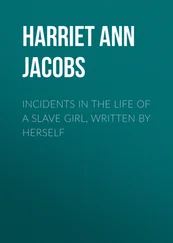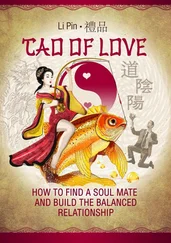It is possible that Roxelana fell victim to an expedition mounted in 1516. Estimates of its captives range from 5,000 to 40,000 to an even larger, undetermined number. [14] Ibid., 580.
While the girl may very well have been abducted on a smaller raid in a different year (a Polish historian has suggested 1509, when her supposed birthplace Rohatyn was the target of Tatar raids [15] Abrahamowicz, “Roksolana,” 543.
), the date 1516 is not implausible. Roxelana was probably no younger than seventeen when she became Suleyman’s concubine in the winter of 1520–1521 and thus around thirteen at the time of this raid. She would have been just old enough to manage survival on her own should she lose any relatives or neighbors captured with her.
The tactics of the Tatar slavers were described in 1578 by the Polish ambassador to the Crimean court, Marcin Broniewski. The raiding season was typically winter, when the freezing over of rivers and otherwise soggy terrain facilitated swifter advance. The Tatars moved quickly, noted Broniewski, laying waste to what they didn’t plunder. Prisoners were typically poorly fed and marched on foot, in chains. They risked physical abuse by their captors, while relatives who tried to ransom them along the way risked extortion.
To make it all the way to the Ottoman capital from Ruthenia was no small accomplishment for a young girl like Roxelana. Even surviving the long trek to Caffa was a hard-won trial. Evliya Çelebi, an Ottoman courtier famous for his extensive travelogue, witnessed a train of captives on their way to the city in the mid-seventeenth century. It was a wonder, he wrote, that any of them survived the march to the slave markets, so badly were they treated along the way. [16] Evliya, Seyahatname , 5:213–214.
The trauma of the raids and of the multiple stages of captivity became enshrined in folklore. A Ukrainian folk song spoke of the devastation of the countryside:
The fires are burning behind the river
The Tatars are dividing their captives
Our village is burnt and our property plundered
Old mother is sabred and my dear is taken into captivity. [17] Quoted in Kizilov, “Slave Trade,” 1.
A Kazakh proverb records the different fates that awaited young males and young females—“the son went as hostage, the daughter to the Crimea”—she to certain slavery, he to an uncertain future. [18] Golden, “Codex,” 40.
And the physical journey from captivity to slavery is remembered despairingly in a Polish proverb: “O how much better to lie on one’s bier, than to be a captive on the way to Tatary.” [19] Fisher, “Muscovy,” 583.
The immediate destination for captives varied. Those taken from Polish lands might be marched to Ochakiv, a fortified city on the western Black Sea coast, from where most were shipped to Caffa. Many would be sold at the city’s slave markets, while others might be kept by their captors or sold directly, without the aid of dealers. The calculation probably took into account the fluctuating price of slaves—low, ironically, when a successful foray glutted the market with its harvest. Not all captives of the Tatars were for sale, for the khan was owed one captive in ten.
Once in Caffa, captives destined for sale would likely find themselves in the large complex that constituted the slave market. Some parts of the market dated from the era of the Italian traders (the thirteenth to the mid-fifteenth centuries), while new facilities were added as the slave trade grew over the sixteenth and seventeenth centuries. The slave dealers were primarily Jews, Greeks, Armenians, and some Italians—in other words, non-Muslims (the Tatars saw themselves as warriors and captors, not middlemen). Dealers typically purchased their merchandise in large lots and then separated the slaves by age, sex, and aptitude for resale, either locally or to other dealers for transport elsewhere.
This sorting process in Caffa probably resembled practices at the Tatars’ own large slave emporium in Karasubazar (black water market), located near the border between the khanate and Ottoman Caffa. Describing it, Evliya Çelebi wrote, “A man who has not seen this market has seen nothing in this world. There a mother is severed from her son and daughter, a son from his father and brother, and they are sold among lamentations, cries of help, weeping, and sorrow.” [20] Evliya, Seyahatname , 7:527.
Of the Caffa slave market a European observer remarked in the mid-sixteenth century, “Herds of these unfortunate folks sold into slavery are driven onto the boats in Kaffa. Because of this practice the city of Kaffa may well be classed a heathen giant who feeds on our blood.” [21] Hrushevsky, History , 160.
Roxelana was likely one of those unfortunates traveling across the Black Sea to Istanbul. If so, we cannot know if she made the arduous journey alone or had the good fortune to be accompanied by others taken from her community. Nor do we know if she was purchased directly by imperial agents in Caffa for palace service or merely shipped to the Istanbul slave market as a common commodity. If the former, she was no doubt protected during the approximately ten-day journey to the Ottoman capital, for other royal agents would likely have been on board in addition to palace slave recruiters. Merchants were frequently dispatched by the imperial treasury to the northern Black Sea region to acquire luxury items purveyed by Muscovy. These included high-quality leather and especially furs, with sable taking pride of place among the Ottomans. In 1529, for example, Suleyman allotted some 6,000 ducats for the purchase of furs. [22] Bennigsen and Lemercier-Quelquejay, “Marchands,” passim.
Goods for the sultan, material and human alike, were precious commodities.
EUROPEANS RAILED AGAINST the Tatar slavers. Their place was hell—the Tartarus of Greek mythology, the abyss below Hades where the wicked were imprisoned. The play with Tatar was obvious. But these critics were typically less concerned with the horrors of servitude than with the prospect of Christian captives converting to the “infidel” faith. [23] Fisher, “Muscovy,” 585; Kizilov, “Slave Trade,” 13–14.
Slavery was no stranger to them, for they had not hesitated to purchase human wares from the Black Sea purveyed by the Genoese and others. Only those Christians bound for Muslim lands seemed to give them pause.
Tirades against the Tatars were sometimes merely recited by rote, as is apparent in a treatise titled On the Customs of Tatars, Lithuanians and Muscovites , composed for the Polish king Sigismund I. Its author, writing under the name Michalon Lituanus (Michael the Lithuanian), repeatedly detailed the abuse of Christian slaves by their Tatar owners. [24] Kizilov, “Slave Trade,” 13–14.
Of slaves working Tatar estates, he wrote, “The best of these unfortunates, if they are not castrated, are branded on the forehead and on the cheeks and are tormented by day at work and by night in dungeons. Their life is worse than a dog’s.” [25] Quoted in Fisher, “Muscovy,” 585.
Elsewhere, however, Lituanus noted that the Tatars treated their captives with consideration and freed them after seven years.
The author of the treatise is worth remembering, for this same Lituanus figures in Roxelana’s story. He was one of the first to publicize the belief that she was a captive from Polish-ruled territory. “The beloved wife of the Turkish emperor, mother of his eldest son and heir,” he reported, “was some time ago kidnapped from our land.” [26] Yermolenko, “Roxolana: The Greatest Empresse,” 234.
(The king of Poland was also the grand duke of Lithuania, hence the Lithuanian’s claim to “our” land.) The man behind the pen name Michael the Lithuanian is uncertain, but he may have been Vaclav Mykolaevyć, who served Sigismund as ambassador to both the Crimean and Ottoman courts. [27] Kołodziejczyk, Crimean Khanate , 87.
If so, “Lituanus” probably encountered this information regarding Roxelana when he traveled to Istanbul in 1538 with gifts for Suleyman.
Читать дальше
